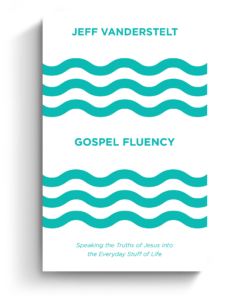Karl Barth claims the most difficult parts of Scripture have better and more important things to say than the best of our theological constructions. I wonder if he really meant it. How could he? A left turn here or there in the canon might lead to murky waters. Mr. Barth, I want to ask, have you ever read Exodus 4:24-26?
I have no doubts Barth read and knew this text. Few theologians in the history of the church had such an all-encompassing commitment to tota Scriptura. But this episode in Exodus remains challenging and often overlooked. These three little verses are tucked in a chapter rich with the themes from Exodus I’ve come to cherish: the saving power of Yahweh, the intercessory role of Moses, Israel as God’s first-born son, and Pharaoh’s impotence. In redemptive urgency for his first-born son, Yahweh continues to reveal his name: “I am who I will be” (Exodus 3). Exodus 4 thunders with these large Exodus motifs. Oh, and by the way, in these three overlooked verses, Yahweh tries to kill Moses.
My Hebrew Exegesis class worked through large portions of Exodus last fall. Fifteen students sat together around a table with Hebrew texts open, joyfully slogging through the swampy terrain of a dead but vibrant language. These classroom experiences continue to thrill. One brave (read “poor”) soul took on the task of writing and presenting on Exodus 4:24-26. The task borders on the impossible because getting a handle on the who, what, and why of the text resists prima facie conclusions.
Reasons for Perplexity
The notes in the Jewish Study Bible are marked by lucidity, insight, and respect—exegetical traits I admire. Jeffrey Tigay’s marginal comments on Exodus are no exception. Here is how he introduces this scene: “This episode, possibly abridged from a fuller, clearer, version, is extraordinarily puzzling because the motive for God’s attack is unclear, the pronouns are equivocal, and Zipporah’s remarks are enigmatic.” In other words, this text is a Hebrew student’s nightmare.
In the previous scene, God has sent Moses to face off with the most powerful man in the known world. Moses carries with him the presence and power of God and a simple message: Pharaoh, let my first-born son go so that he may worship me. If we air-lifted our text out of Exodus 4, this commissioning scene would lead quite naturally into the commissioning of Aaron to join Moses in his mission and wilderness journey to Egypt. But we are not left with this tight, narrative flow. We’re left with these three strange verses:
At a lodging place on the way the LORD met him and sought to put him to death. Then Zipporah took a flint and cut off her son’s foreskin and touched Moses’ feet with it and said, “Surely you are a bridegroom of blood to me!” So he let him alone. It was then that she said, “A bridegroom of blood,” because of the circumcision.
Tigay’s anodyne descriptor “enigmatic” gets the job done. This text is a mess. Who is the “him” in verse 24? The requisite information regarding the cause of Yahweh’s man-hunt remains unclarified. How does Zipporah, a Moabite woman, know the bloody circumcision ritual might have its thwarting effect? And what about Zipporah’s valentine to Moses? “Surely you are a bridegroom of blood to me.” Let the burning embers of romance begin.
Staying Humble Before the Text
In his De Doctrina Christiana, Augustine of Hippo reminds readers of Scripture about difficult texts like Exodus 4. They remain within Scripture for humility’s sake. The singular reading virtue agreed upon within the tradition from Augustine to Cranmer to Barth remains humility. Once we think we have Exodus under our belt, Yahweh’s trying to kill Moses. We’re humbled before the rough margins of this ancient text we believe to be the very Word of God. Like its author, Holy Scripture is no tame lion.
The high view of Scripture in the early church meant that all of it matters—even the most difficult and least accessible parts (à la Barth). Truth be told, if I were preaching or teaching through Exodus in a church context, I’d probably skip right over Exodus 4:24-26. Or I’d make some self-deprecating comment about its “enigmatic” character and my inability to come to terms with it. We’d laugh and move on.
Not so with the fathers. A daunting text like Exodus 4:24-26 is a green light for deeper reflection on the spiritual character of the difficult text at hand. Admittedly, not all these readings persuade. But the instinct should: difficult texts should not be avoided. While recently reading Maximus the Confessor’s On the Cosmic Mystery of Jesus Christ, I was taken back when I discovered that for Maximus, Exodus 4:24-26 was a text of some consequence in his construal of the Christian life.
Maximus lived in the nether region bordering early and medieval Christianity (580-662). Indebted to the Alexandrian tradition of Scripture reading, Maximus believed the obscure parts of Scripture invite the reader to pursue its deeper logic. In his Ad Thalassium 17, Exodus 4:24-26 provides one such invitation for deeper delving. After raising all the difficult questions the text itself elicits, Maximus leads the reader beyond the obscurity of the literal sense of the text in Moses’s time into the spiritual reality of the text for present readers. The literal sense itself carries the spiritual sense’s potential. Yet spiritual eyes are necessary for seeing the text’s true depth.
For Maximus, the bizarre episode in the Exodus narrative figures for the reader the move from the desert—the location where the mind is freed of its enslavement to the flesh and sensory desires—to Egypt—where the flesh both beckons and enslaves—and back then to the desert. The Exodus narrative patterns for Christian readers the progress and struggle of a virtuous life.
The angel of death attacks Moses to rid him of his immobility in the pursuit of virtue. For, according to Maximus, immobility in virtue is nothing other than the first step toward vice. “When the mind, in subjection to passion, is vexed by material obstacles intruding from either side in its way, it profanes and renders uncircumcised the pure and wholly circumcised conduct and reflection that arise from godly living.” The angel attacks to threaten the conscience while the word of faith circumcises the conscience, removing the residual longings of the flesh.
Gregory of Nyssa, some 200 years earlier in his The Life of Moses, understands the episode as a figural portrayal of “circumcising” pagan philosophy of extraneous elements when bringing its fruits to the Christian theological imagination. Many Jewish interpreters follow the Talmudic interpretation. On this account, Moses comes under divine threat because he delayed circumcising Gershom, his son. The medieval rabbinic interpreter Ibn Ezra suggested God’s anger ignites against Moses because Moses took his wife and child along—a reading with some internal support in Exodus 18:2 where Moses sends his wife and children back to Midian. Some critical scholars, like Julius Wellhausen, understand this episode as a causal explanation for the circumcision of Israelite children. The interpretive options continue.
What we have from both Gregory and Maximus is good old fashioned Christian allegory. Its value is not to be underestimated or undermined, though admittedly allegory has fallen on hard times with the historicist instincts that drive modern, critical interpretation. I’ll leave this thorny matter for another time. The Jewish reading tradition seeks to make sense of the text by clarifying the cause of God’s threat. “What did Moses do to anger God?” Engaging these various interpretive approaches takes us beyond our purview, interesting as they are. A more pedestrian point fascinates me. Gregory, Maximus, and the Jewish tradition briefly accounted for above couldn’t leave Exodus 4:24-26 alone. They had to engage it.
Patience in Interpreting Scripture
When speaking with my own students about the interpretation of Scripture, I often identify “responsibility” as an important character trait of the interpreter. I emphasize responsibility above accuracy, because the former is marked by humility and a recognition that our exegetical tools (tangible and intangible) expand over time. (The possibility of retraction shouldn’t be ruled out either!)
I don’t often speak of patience with my students—in part, because I’m not patient. But patience is necessary as a reader of Scripture, especially in the realm of the difficult and least accessible parts. But the “easy” and “familiar” parts of Scripture demand patience too. Mark Twain’s oft-repeated quip holds true: it’s not the parts of the Bible I don’t understand that bother me; it’s the parts that I do understand.
I’ll start speaking more about patience with my students, a patience laced with courage. Don’t avoid the difficult parts of Scripture for greener grass. At the same time, allow your readings a provisional status fully capable of recalibration at a later time. Augustine’s great interpretive insight holds true today: Scripture is accessible enough for children and at the same time complex enough to keep scholars engaged for a lifetime. Exodus 4:24-26 is a case in point.
Returning to Exodus 4 a final comment is in order. Interestingly, both Exodus 4:25 and 12:22 use the Hebrew term naga (touch, strike) for the application of blood to the respective object—an exegetical insight that can be traced back to Ibn Ezra. The “enigmatic” text of Exodus 4 and the Passover text of chapter 12 both have the subject matter of the first-born son in view. Both texts understand the application of blood as the means by which divine disfavor is thwarted. In the final form of Exodus, these linguistic and thematic connections cannot be taken lightly, though, admittedly, many features of the text remain “enigmatic.” (“A bridegroom of blood”?)
The link between blood, averting divine wrath, and the first-born son in Exodus 4 and 12 provides the New Testament with much of its theological vocabulary and rationale for the atoning work of Jesus Christ. Who would have thought that this most “enigmatic” of texts may in fact be organically and substantially connected with the heart of the Christian message of atonement? I’ll have to think about this a little bit more: patiently, mind you.
“The Most Practical and Engaging Book on Christian Living Apart from the Bible”
 “If you’re going to read just one book on Christian living and how the gospel can be applied in your life, let this be your book.”—Elisa dos Santos, Amazon reviewer.
“If you’re going to read just one book on Christian living and how the gospel can be applied in your life, let this be your book.”—Elisa dos Santos, Amazon reviewer.
In this book, seasoned church planter Jeff Vanderstelt argues that you need to become “gospel fluent”—to think about your life through the truth of the gospel and rehearse it to yourself and others.
We’re delighted to offer the Gospel Fluency: Speaking the Truths of Jesus into the Everyday Stuff of Life ebook (Crossway) to you for FREE today. Click this link to get instant access to a resource that will help you apply the gospel more confidently to every area of your life.




























